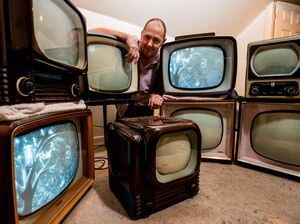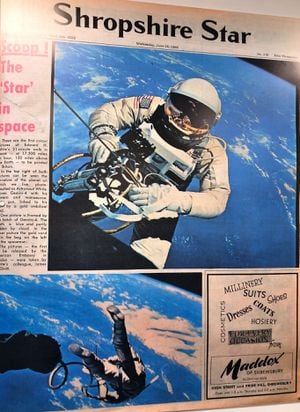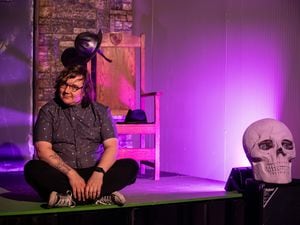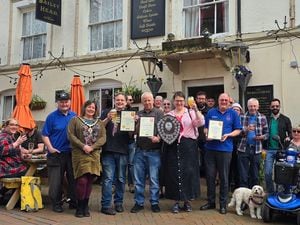Colour telly? It’s still all there in black and white
People often talk about television currently enjoying a golden age – but for 31 households in Shropshire, things are still monochrome.

New figures from TV Licensing show that after more than 50 years of colour transmissions, there are still 31 households in Shropshire that are still watching in black and white.
Five of those who are struggling to work out who's who in Brazil v England football matches live in Oswestry, while seven households in Telford have still to embrace glorious technicolour.
Ian Kennedy of Ketley Bank, Telford, collects vintage television sets – and said he was not surprised to hear there are still people in Shropshire watching black and white televisions.
“Many of the black and white sets still in use are likely to be televisions built in the 1970s and ‘80s," he said.
"I suspect some people stick with this technology due to the fact that it’s cheaper than owning a colour TV, but as the sets age and start to fail it’s unlikely that they would be repaired.
"They are built in a similar way to modern sets which cannot be fixed as televisions used to be – those of us who are old enough, will remember the TV repair man coming round. There were quite a lot of people employed in fixing TVs but that industry is very much a thing of the past."
Ian added: “The types of set I collect are pre-1967, which can be repaired and restored to their former glory. There are a number of enthusiasts like me around the country and these people would also fall under the category of black and white TV Licence owners.”
Internet
Nationally there are still 7,000 black and white TV licences in force, but the number appears to be diminishing fast.
At the turn of the century there were 212,000 people who could only watch the debut season of Big Brother in black and white, by 2003, only 93,000 watched Little Britain hit the airwaves colour-free, and by 2015 Wolf Hall was broadcast in black and white to fewer than 10,000 households.
Mark Binnersley, spokesperson for TV Licensing, said: “Over half of the UK’s TVs now connect to the internet, so it’s interesting that more than 7,000 households still choose to watch their favourite shows on a black and white telly.
“Whether you watch EastEnders, Strictly or Question Time in black and white on a 50-year-old TV set or in colour on a tablet, you need to be covered by a TV Licence to watch or record programmes as they are broadcast. You also need to be covered by a TV Licence to download or watch BBC programmes on iPlayer, on any device.”
Grey, grainy but a nation was hooked
Toby Neal explains how flickering, grey images gave way to glorious colour.
The colour, pomp, and pageantry of the 1953 Coronation was a turning point for British television.
Viewers enjoyed the pomp and pageantry, but they missed out on the colour bit. The BBC pictures were of a grey, monochrome event. From then on, everybody wanted a telly.
A black and white telly, with a tiny screen and lousy resolution. That’s all you could get – and it was magic.
Nobody who crowded round the sets to watch the Coronation thought to themselves “If only somebody was to invent colour television.”
What you don’t have, you don’t miss.
It was much the same in the greatest event in the history of the entire world.
Except it didn’t happen on this world, but on the Moon. Neil Armstrong made that one small step in great big space boots in fuzzy black and white.
So we all saw a grey Moon, which is what we probably expected. Only when the colour stills came back did we see that space was a place of glorious colour.

We might mention, ahem, that the Shropshire Star was one of the few British newspapers at the time capable of publishing pictures in full colour.
One thing to be said about having a black and white telly is that when you finally got a colour one it was sensational. Today everybody has colour tellies and they have nowhere to go but bigger.
They tried 3D, but nobody wanted it. You can get HD, but you don’t really need it. Yes, the pictures are better, but let’s face it, a lot of the programmes are rubbish.





